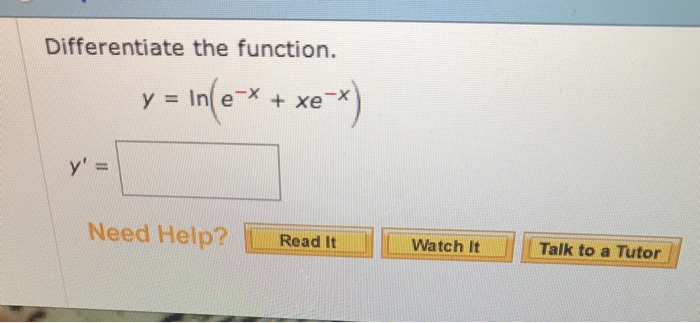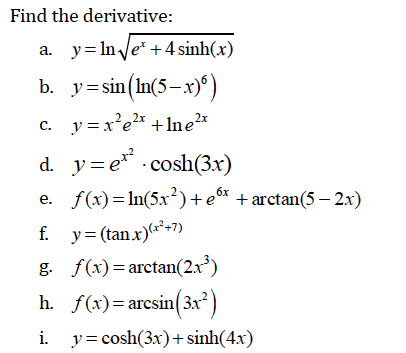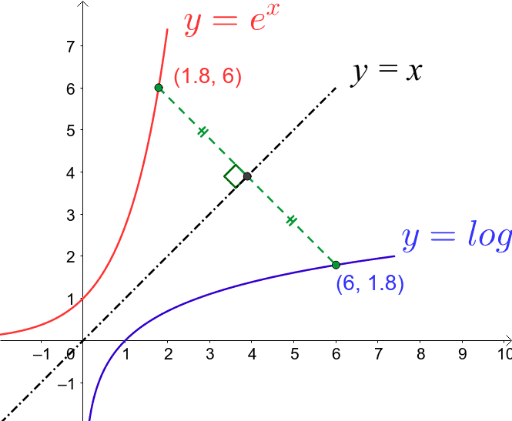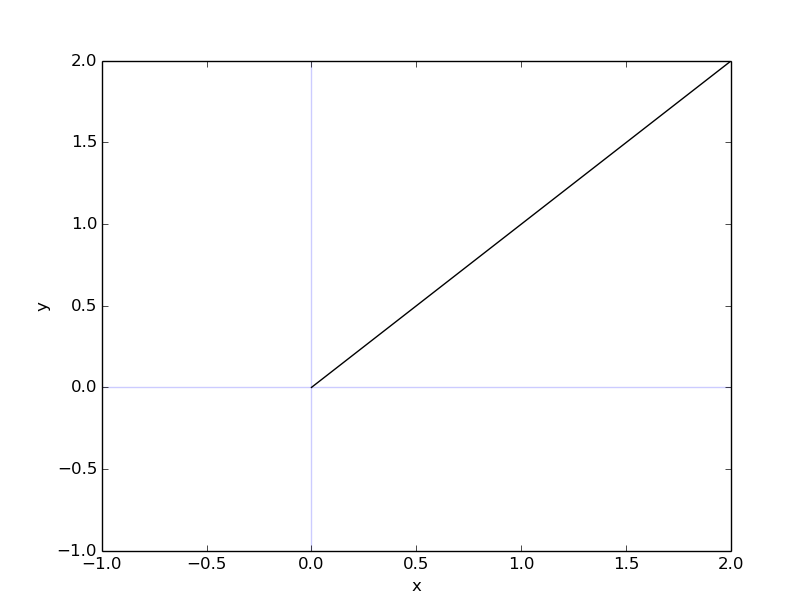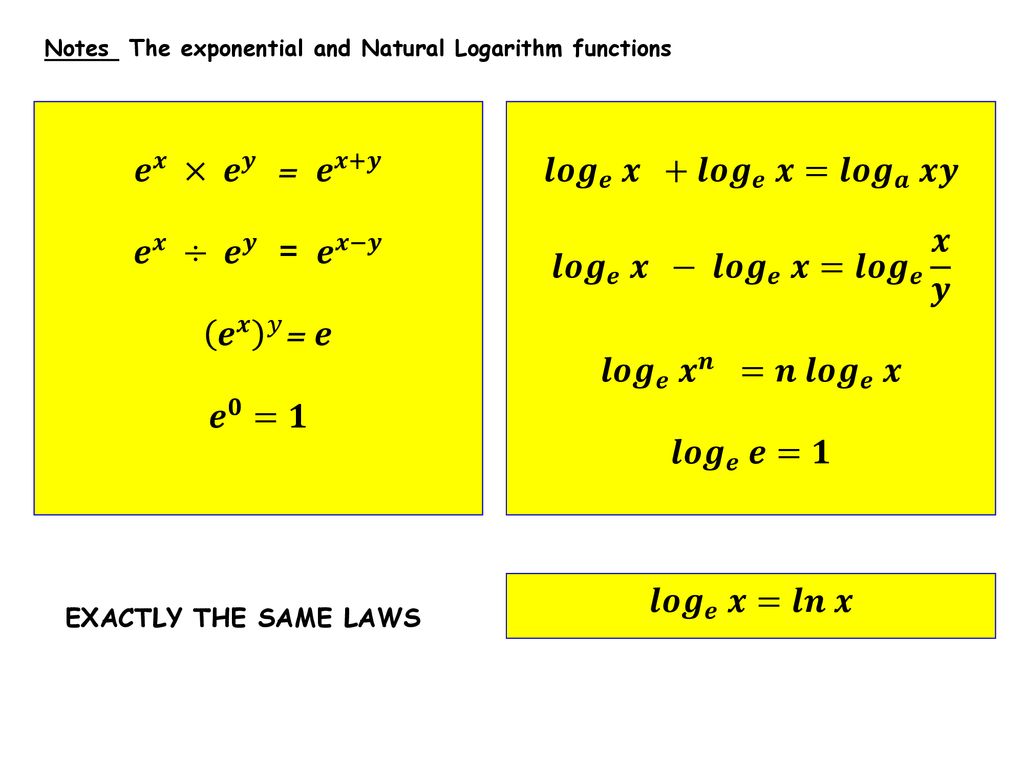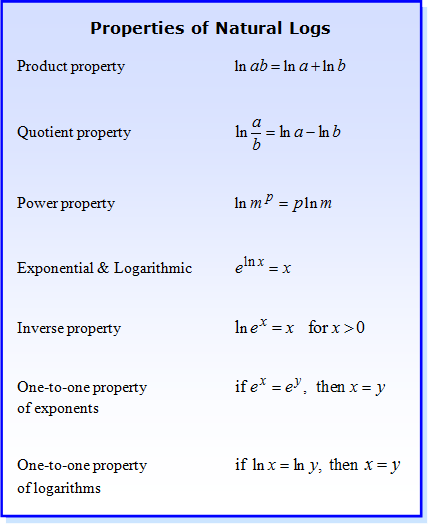
How to Find the Derivative of y = ln(e^x/(1 + e^x)) by using Properties of Logarithms First - YouTube

Find the slope of the graph of y = ((ln x)^4)/x at the point (e, 1/e). Slope is ___. Now find an equation for the tangent line at that point, then solve

E/ Natural Log. e y = a x Many formulas in calculus are greatly simplified if we use a base a such that the slope of the tangent line at y =

Describe the graphs of y = e^x and y = ln x. Relate one graph with the other and describe that relationship. | Homework.Study.com



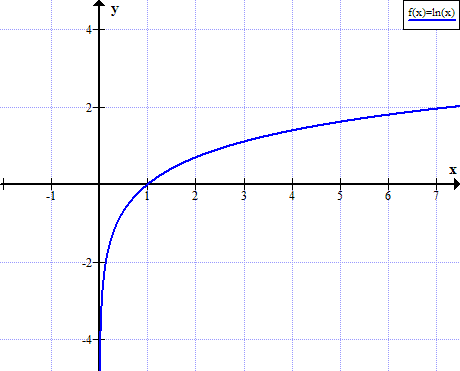




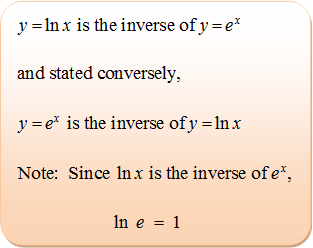

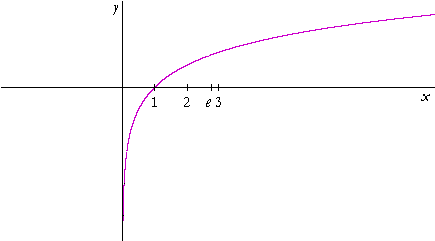

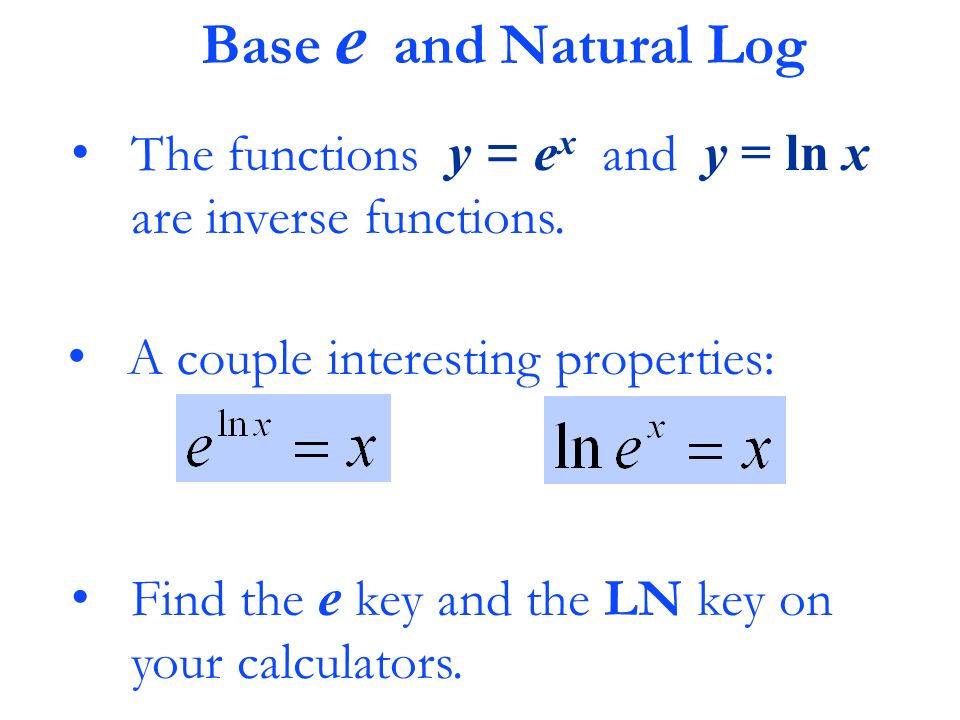

)=\ln(5)&line2=\mathrm{Solution:\:}y=\ln(e^{x}%2B2))
